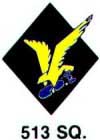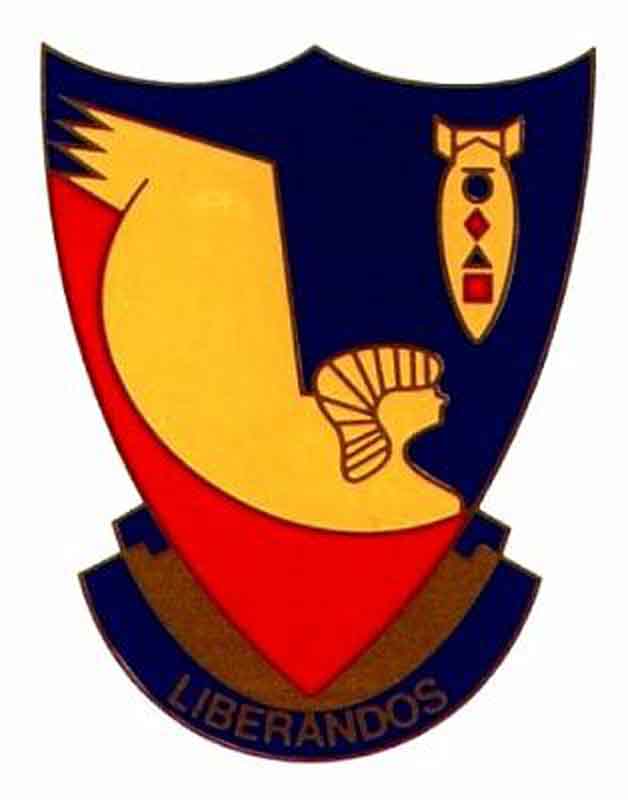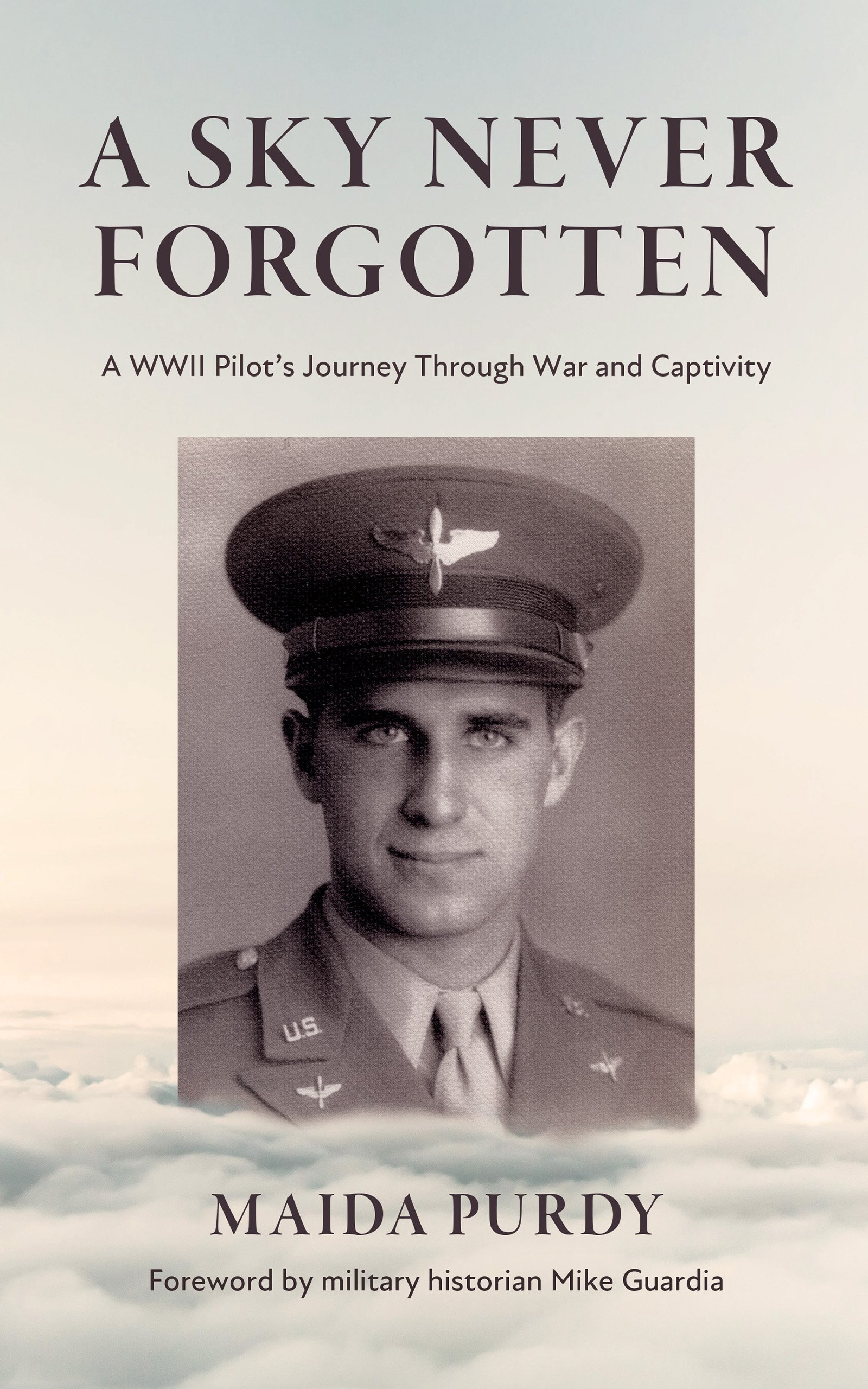Roger Arendsee mission of Nov 22, 1944
Roger Arendsee notes on mission of November 22, 1944
RR bridge at Ferrara, Italy. Worst Flak I have ever seen. Hundred guns on us for about 10 minutes. Was flying with Lt. James crew in #43. We only got 40 holes [James & Ripley both claim it was 400+ holes] but all were in vital places. Flak broke up the formation. One engine quit and lost power in # 2 engine. Lost formation. Saw fighters attack lone bomber behind us. Could not hold altitude and had to land on small strip about 60 mi north of Foggia. [Learned later it was a simulated strafing target for fighters to practice on.] lost # 2 on approach. Had to dig plane out of sand to move it. Needs 3 new engines and new gas tanks for sure. Found piece of flak with # 43 on it. Had a steak supper [with the communications cadre at the site] & stayed in Foggia that night. We also got flak at 5 places (sic) en route to and from target [Verona, Italy, R.R yards were our primary target, but it was obscured by clouds and Ferrara was our secondary target.]
"I'd like to share what happened on what turned out to be my final mission the day before Thanksgiving 1944. I'd always heard the saying, "Don't ever volunteer for anything," but I must have forgotten it at the time. I was one mission behind the rest of our crew (Pilot Tom Mackie), and I wanted to catch up so that I could return to the States with them. I volunteered to fly as Radio Operator and was assigned to fly with Bob James' crew.
Our primary target was the Railroad Marshaling yards at Verona, Italy (My diary states "Verona" debriefing record states "Vicenza"). We flew up the Adriatic and turned inland near Venice. Mostly inaccurate flak followed us most of the way to the target area, but when we got close, the whole target area was completely cloud covered so we did a 180 to go to our secondary target, the railroad bridge over the Po River at Fararra. We got the same "welcome" going out that we received coming in.
Going south a bit we headed back in towards the bridge at Fararra. Unfortunately, that bridge was the only RR bridge still standing over the Po River, and the Germans needed it to supply their troops at Bologna. It was heavily defended, and to make matters worse, (1) We were flying at 18,000 feet at the base of the heavy overcast. (2) The bridge had been hit by another group about a half hour before we came along. This made for some bad moments, for (1) All the alerted Germans had to do was set the timed fuses on their 88 MM Flak guns to go off at the base of the clouds, and (2) they could aim directly at us as we were silhouetted against the clouds. I had never seen such intense or accurate flak on any of my missions (except perhaps Ploesti). Rather than black puffs, they were all loud, orange blasts throughout the formation. Thankfully, we all got through the flak, but for the first time as soon as the group exited the target area, the formation broke up, and it was every man for himself. (and oh yes, we missed the bridge.)
All the while we headed south following the coast line we kept losing power and altitude. We had sustained hits in three of the engines and in some of the gas tanks. We still had to cross a mountain range in order to reach San Pancrazio, but before long we were below the tops of the mountains. Bob James told us to prepare to bail out when he gave the alarm.
Shortly before we would have had to bailout, one of the crew sighted what appeared to be a runway paralleling the beach. With one engine already feathered, we made the 180 degree turn and headed for the "runway." Another engine failed as we approached, but we made it down safely. We rolled to the end of the "runway" and promptly settled into the sand. It turned out that the "runway" was really a simulated airstrip used by fighter aircraft to practice strafing tactics.
While awaiting a cadre from the aircraft controllers, who lived with an Italian family on a hill overlooking the airstrip, to come get us, we began inspecting the damage. We counted some 40 holes (another crewman says it was 400 holes) but they were in vital places. The airplane was number 43. One piece of flak had hit one of the receivers of a top turret gun and dropped to the floor. We found it and upon examination we found the number 43 imprinted on it (What is it they say about your number coming up?) The controllers took us to the farmhouse where they fed us a delicious pre-Thanksgiving steak dinner.
That night they took us by truck into Foggia where we stayed overnight in a No Star hotel. The 376th sent a plane for us on Thanksgiving. To my chagrin our crew flew a mission on Thanksgiving, so I was still one mission behind.
Incidentally, a friend of Bob James visited that area some years later and the hulk of the plane was still there. I keep telling Bob that that mission is not the reason I decided to become a Chaplain in the USAF."


The website 376bg.org is NOT our site nor is it our endowment fund.
At the 2017 reunion, the board approved the donation of our archives to the Briscoe Center for American History, located on the University of Texas - Austin campus.
Also, the board approved a $5,000 donation to add to Ed Clendenin's $20,000 donation in the memory of his father. Together, these funds begin an endowment for the preservation of the 376 archives.
Donate directly to the 376 Endowment
To read about other endowment donation options, click here.
Reunion
NOTE change in the schedule !!
DATES: Sep 25-28, 2025
CITY:Rapid City, SD
HOTEL: Best Western Ramkota Conference Hotel; 2111 North LaCrosse St., Rapid City, SD 57702; 605-343-8500
Click here to read about the reunion details.




















